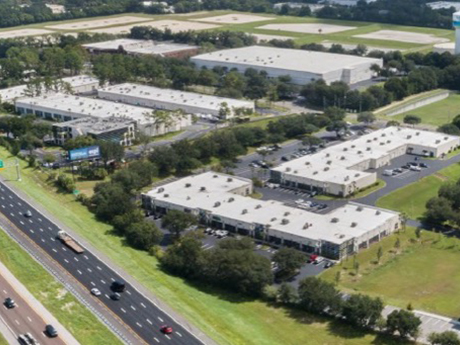Still going strong after two years since the onslaught of COVID-19, Orlando’s industrial market has seen a steady increase of robust leasing activity and development, with no signs of stopping. The growth is attributable to record-low vacancy, emerging construction and increasing demand from existing tenants expanding their businesses and new tenants in the market.
Economic conditions affecting the market are similar to last year, as labor shortages and supply chain issues remain. However, the industrial sector overall has not been adversely affected.
Orlando continues to be the place for existing business advancement and new business development. The city’s population growth outpaces that of any other city in Florida due to its central location, warm weather year-round, no state tax and relative affordability. As such, the market is seeing large enterprise retail and consumer goods companies claiming their stake in the Sunshine State.
Robust leasing activity
The total industrial leasing volume in the Orlando market for the second-quarter 2022 was 4.5 million square feet, 43 percent of the total leasing volume seen in 2021. Eight leases over 100,000 square feet were signed to date in 2022.
The largest lease in the first half of 2022 was the new 294,787-square-foot Coca-Cola lease in the 33rd Street submarket in the second quarter, followed by the 187,196-square-foot State Logistics Response Center renewal in the Orlando Central Park submarket in the first quarter and then the 169,384-square-foot Global Mail lease in the Airport-Southeast submarket in the second quarter.
Industrial asking rates continue to trend upward due to strong demand, limited supply of land and rising construction costs. Orlando’s overall industrial rate, excluding flex space, increased to $8.86 per square foot (triple-net), up 10 percent from one year prior.
The Airport submarket is still one of the most active, with heavy demand from tenants seeking plus-100,000-square-foot spaces. Overall, large spaces remain in the highest demand, followed by smaller 5,000- to 20,000-square-foot spaces. Mid-sized spaces between 20,000 to 100,000 square feet have proven difficult to find.
Along with the positive growth, there are a few challenges for tenants in the market. Some tenants are experiencing limited options when needing to move into larger spaces due to their business growth. Even those that do find space have trouble building them out because supply chain issues impact the availability of construction materials.
Additionally, landlords, particularly larger institutional owners, have become very concerned about credit. Despite tenants showing solid sales numbers, more landlords must be convinced that tenants will grow. As such, national tenants are getting space quicker than local businesses, which will have to prove they are viable and scalable over time. Also, interest rates have increased by $2 to $3 per square foot as opposed to last year.
Exciting new development
A wave of new industrial development is on the horizon after several quarters of strong leasing activity and declining vacancy rates. As of the end of second-quarter 2022, 43 buildings totaling 4.6 million square feet are under construction. There are 46 projects totaling 12.3 million square feet in the pipeline that have yet to break ground.
As of second-quarter 2022, the two largest projects under development are the 540,399-square-foot McCoy Logistics Center – Building 300 in the Airport-Southeast submarket and the Airport Distribution Center – Building G in Osceola County. Both expect to be delivered by year-end.
As with leasing activity, the Airport submarket remains the strongest regarding new development, with seven new projects coming out of the ground. Little availability of quality land sites for new construction has resulted in the need for industrial developers to build further out in sister cities like Apopka and Ocala and toward State Road 429 and Interstate 75. The expectation is that growth remains positive and supply and demand work together so that overbuilding is not an issue.
Insatiable investor appetite
Investors are still scouring the market for industrial properties with even stronger interest than ever. Smaller investors especially are turning stones trying to find projects to buy. Existing owners are holding on to properties because they risk paying high capital gains taxes with virtually nothing available to roll the sale proceeds into. With so much investor money in the market, high demand and little supply, dwindling interest is not a concern.
Despite low supply, several significant industrial sales have taken place in the Orlando market so far in 2022. The two most notable in terms of price were the Blackstone portfolio that sold in the first quarter for $227.5 million and the 830 South Ronald Raegan Boulevard property that sold in the second quarter for $139.5 million.
Market outlook
High demand for properties, steady growth for businesses and construction sectors attribute to an overall positive outlook for Orlando’s industrial market. There will be some slowdown, but rents are expected to continue to increase due to heavy population growth and scarcity of inventory. Orlando’s growing consumer and labor bases, paired with its attractive central location, will continue to attract industrial tenants for many quarters to come.
— By Lisa Bailey, SIOR, Principal, Avison Young. This article was originally published in the August 2022 issue of Southeast Real Estate Business.



